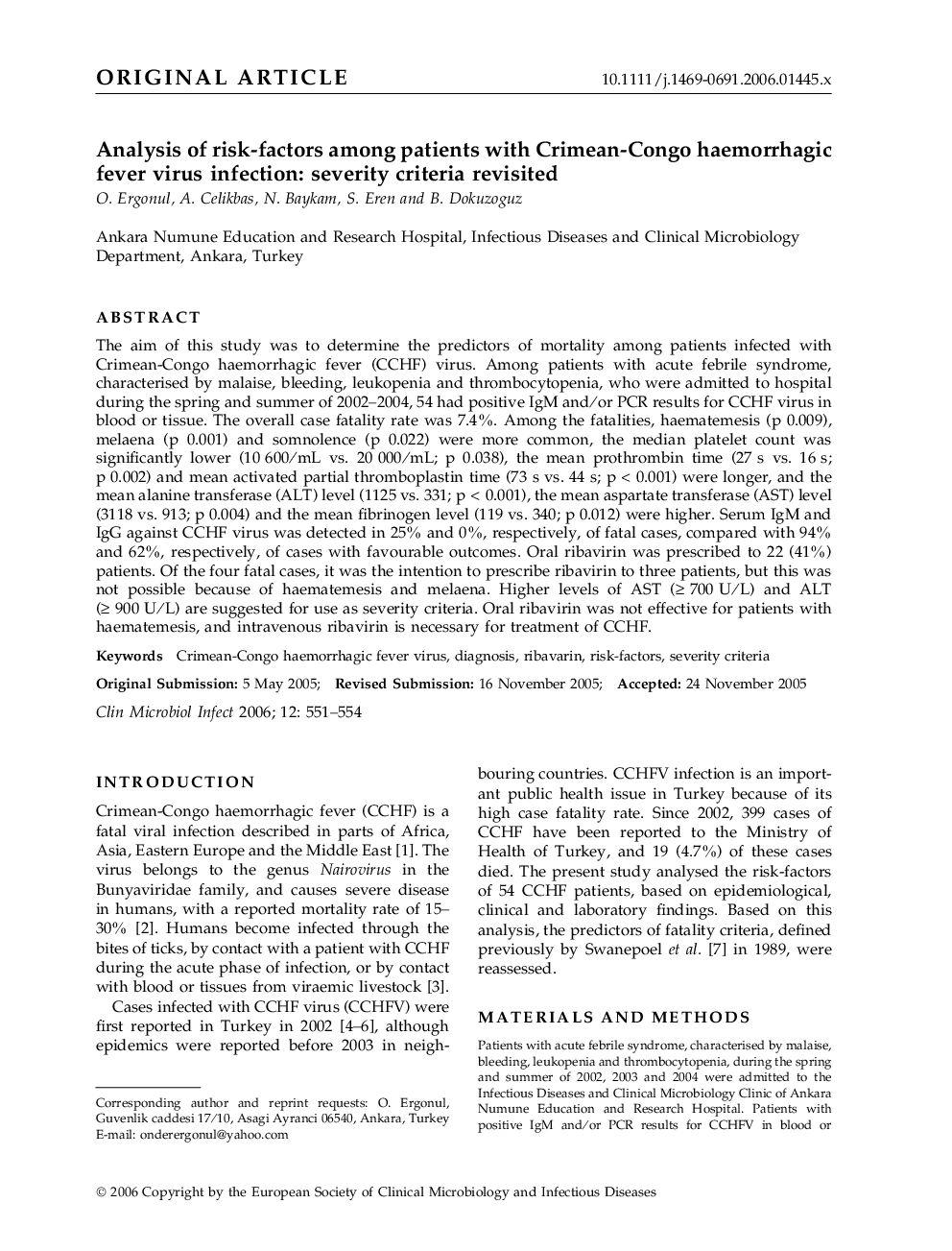| Article ID | Journal | Published Year | Pages | File Type |
|---|---|---|---|---|
| 3398604 | Clinical Microbiology and Infection | 2006 | 4 Pages |
ABSTRACTThe aim of this study was to determine the predictors of mortality among patients infected with Crimean-Congo haemorrhagic fever (CCHF) virus. Among patients with acute febrile syndrome, characterised by malaise, bleeding, leukopenia and thrombocytopenia, who were admitted to hospital during the spring and summer of 2002–2004, 54 had positive IgM and/or PCR results for CCHF virus in blood or tissue. The overall case fatality rate was 7.4%. Among the fatalities, haematemesis (p 0.009), melaena (p 0.001) and somnolence (p 0.022) were more common, the median platelet count was significantly lower (10 600 /mL vs. 20 000 /mL; p 0.038), the mean prothrombin time (27 s vs. 16 s; p 0.002) and mean activated partial thromboplastin time (73 s vs. 44 s; p < 0.001) were longer, and the mean alanine transferase (ALT) level (1125 vs. 331; p < 0.001), the mean aspartate transferase (AST) level (3118 vs. 913; p 0.004) and the mean fibrinogen level (119 vs. 340; p 0.012) were higher. Serum IgM and IgG against CCHF virus was detected in 25% and 0%, respectively, of fatal cases, compared with 94% and 62%, respectively, of cases with favourable outcomes. Oral ribavirin was prescribed to 22 (41%) patients. Of the four fatal cases, it was the intention to prescribe ribavirin to three patients, but this was not possible because of haematemesis and melaena. Higher levels of AST (≥ 700 U/L) and ALT (≥ 900 U/L) are suggested for use as severity criteria. Oral ribavirin was not effective for patients with haematemesis, and intravenous ribavirin is necessary for treatment of CCHF.
